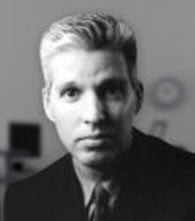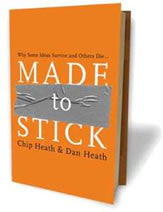How Dr. David Hunnicutt, President of WELCOA, left me speechless. (Or, why I wrote a book about Stress.)
I first met David Hunnicutt, the President of WELCOA at the American Journal of Health Promotion Conference in Hilton Head South Carolina. Dr. Hunnicutt was giving the keynote address and I was really impressed by it. I happened to bump into him the next day, and I introduced myself, told him a little about what I did, and I told him how much I liked his speech. A year later when I ran into him again at another conference, he surprised me by saying that he remembered meeting me the year before and that he planned on stopping by my booth the next day.
 The next morning I remember mentally preparing a pitch for him about all our great stress management training materials. He arrived at my booth, but before I could begin my pitch, he began his. He told me that he wanted me to write a book on stress that WELCOA would publish. He told me that he wanted a book that would be easy to read, could be used by people at work and what really surprised me was that he proceeded to give me several additional reasons why I would be the perfect person for the job. He had obviously done his homework and pretty much left me standing there speechless (which isn't always easy to do.) One thing I've learned since about David is his level of enthusiasm is positively contagious. You just feel your energy lift whenever you talk with him. He gave me the name of a woman to contact at WELCOA who would be my editor, we shook hands and that was pretty much that.
The next morning I remember mentally preparing a pitch for him about all our great stress management training materials. He arrived at my booth, but before I could begin my pitch, he began his. He told me that he wanted me to write a book on stress that WELCOA would publish. He told me that he wanted a book that would be easy to read, could be used by people at work and what really surprised me was that he proceeded to give me several additional reasons why I would be the perfect person for the job. He had obviously done his homework and pretty much left me standing there speechless (which isn't always easy to do.) One thing I've learned since about David is his level of enthusiasm is positively contagious. You just feel your energy lift whenever you talk with him. He gave me the name of a woman to contact at WELCOA who would be my editor, we shook hands and that was pretty much that.
 At an early meeting David suggested I read a book called "Made to Stick," by Chip and Dan Heath. It describes how to use advertising and marketing concepts to improve the "stickiness," of your writing, a term first introduced by "The Tipping Point" author Malcolm Gladwell, and refers to a person's ability to remember something like an ad campaign or a story or an urban legend. He thought that "Made to Stick" would inspire me to organize my stress management material in a creative way in order to make it a much more memorable experience for the reader.
At an early meeting David suggested I read a book called "Made to Stick," by Chip and Dan Heath. It describes how to use advertising and marketing concepts to improve the "stickiness," of your writing, a term first introduced by "The Tipping Point" author Malcolm Gladwell, and refers to a person's ability to remember something like an ad campaign or a story or an urban legend. He thought that "Made to Stick" would inspire me to organize my stress management material in a creative way in order to make it a much more memorable experience for the reader.
He was absolutely right. The next time I sat down at my computer my writing was completely different. I was writing in the style of a story teller. When I submitted my second proposal I knew it was going to be a winner and both he and the editor loved it. In early June I started working on the first two chapters and when the editor sent them back in July with virtually no changes, I knew we were all on the same wavelength. The only thing that remained to be seen was whether we could meet our target date of getting the book at the printer by January of this year. They started sending me back the design work for each chapter I had written, and that design work was simply awesome. We went back and forth like this, chapter by chapter, for six months and by Christmas of 2011 we pretty much had a finished book.

STOP STRESS THIS MINUTE is the name of my new book from WELCOA
I'm proud to say it's a graphically elegant book (thanks to Adam the designer at WELCOA), covering stress management from a lot of different angles but in a way that is extremely practical, easy to follow and packed with lots of very useful information. It's not only about how to manage your stress but how to change your behavior as well. I try to inspire readers to make behavioral changes that have an immediate impact on their lives, thus reinforcing their efforts to keep the new changes in place while adding more layers of change as time and inspiration allow. (And successful small change inspires additional changes.)
Here's the first chapter and you can decide for yourself. This chapter and chapter two are mostly about self-regulating your nervous system which is a concept I came across working with Dan Goleman on a project related to Emotional Intelligence. Most people don't think of managing stress in this way, but once you do, you really get a different handle on it, and that makes it much easier to understand and to do.
It was absolutely a joyous experience to work with David and his staff (particularly Maddy and Adam). Every time we had a phone meeting, David would fill me up with his enthusiasm not only for how well the writing was going but for how well he thought the book was going to do. I remember when STOP STRESS THIS MINUTE was completed he said to me, "Well Jim, you know how at the beginning of a roller coaster ride you take that long slow trip up to the top of the first hill?"
I said, "yes," not knowing where he might be going with this.
"Well, that's where we are right now - we've done all the hard work and now you can just sit back and enjoy the ride."
For me it had already been an awesome ride, just working with the production team at WELCOA.
Let me quickly summarize what you'll find in each chapter:
Chapters 1 & 2
Chapter 1 and 2 are about self-regulating your nervous system and we give you ten short two minute exercises that will help you calm your nervous system at your command.
Chapters 3 & 4
Chapter 3 and 4 are about changing your stressful thinking. Not many people realize the extent to which their thinking affects their experience of stress. After reading these two pithy chapters you most certainly will and have tools for changing your thinking.
Chapters 5 & 6
Chapters 5 and 6 are about changing your stressful behaviors. Understanding how most of us manage our stress by self-medicating with counter-productive coping strategies like drinking, smoking, over-spending and eating which only make matters worse. We show you exactly how behavior change works and how to apply this information to managing your stress.
Chapters 7 & 8
In chapter 7 and 8 we look at stress management as a form of problem solving. After all, most of our stress really boils down to specific problems that we have to solve. And once we understand how stress robs us of our creative problem solving ability, and then, how to get it back, it's a fairly simple matter, to solve each stressful problem one by one.
Chapter 9
In chapter 9 we learn how to find the time to manage stress. All the advice in the world isn't going to help you manage stress if you don't have the time set aside to do it. And the take away from this chapter is that you must literally take-away time from less important activities - like TV-watching - and shift it to more important (but less urgent) activities like managing stress. (In other words, you can't add stress management to your already busy schedule without taking something away first.)
Chapter 10
And finally in chapter ten, we show you how to motivate yourself to WANT to make these changes. The desire to change has to come from within. Planting the seeds of this inwardly motivated desire is the goal of this final chapter.






James Porter
Author